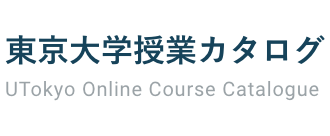学内のオンライン授業の情報漏洩防止のため,URLやアカウント、教室の記載は削除しております。
最終更新日:2025年4月21日
授業計画や教室は変更となる可能性があるため、必ずUTASで最新の情報を確認して下さい。
UTASにアクセスできない方は、担当教員または部局教務へお問い合わせ下さい。
最終更新日:2025年4月21日
授業計画や教室は変更となる可能性があるため、必ずUTASで最新の情報を確認して下さい。
UTASにアクセスできない方は、担当教員または部局教務へお問い合わせ下さい。
グローバル教養科目(Sociolinguistics in a Global Society)
Sociolinguistics in a Global Society
Students are welcome to this class where we will learn about and discuss issues surrounding global society and language. Sociolinguistics explores how language and society are connected. It looks at how language shapes, and is shaped by, factors like identity, gender, ethnicity, education, class, sexuality, power, and culture. These are topics that both students and teachers have real-life experience with. In this course, we will share our experiences, thoughts, and opinions on them. Different languages and the social and historical backgrounds of the people who speak them affect how policies are made, especially as we work toward the 17 Sustainable Development Goals (SDGs). Because of this, it is very important to understand the role language plays in society—and how this understanding can help us reach our global development targets. For example, recognizing language diversity is crucial at a time when many populations around the world are vulnerable. Understanding their varied linguistic needs allows us to create inclusive policies that respect multiple languages and benefit everyone.
By the conclusion of this course, it is hoped that you will have obtained knowledge of sociolinguistics and the role language plays in sectors relevant to global society through readings and class discussions. You will have ample opportunity to share your thoughts and opinions on these issues as we gain a collective understanding of how language will enable us to work towards the SDGs and navigate obstacles along the way.
By the conclusion of this course, it is hoped that you will have obtained knowledge of sociolinguistics and the role language plays in sectors relevant to global society through readings and class discussions. You will have ample opportunity to share your thoughts and opinions on these issues as we gain a collective understanding of how language will enable us to work towards the SDGs and navigate obstacles along the way.
時間割/共通科目コード
コース名
教員
学期
時限
7V0101026S-P/F
FGL-GL3126S3
グローバル教養科目(Sociolinguistics in a Global Society)
Perry Simon James
火曜5限
講義使用言語
英語
単位
2
実務経験のある教員による授業科目
NO
他学部履修
可
開講所属
グローバル教育センター
授業計画
WEEK 1: Course orientation
WEEK 2: Introduction to Sociolinguistics and Global Society
WEEK 3: Language and Identity I
WEEK 4: Language and Identity II
WEEK 5: Language and Gender
WEEK 6: Language and Social Class
WEEK 7: Language and Power
WEEK 8: Language and Migration
WEEK 9: Language and Racism
WEEK 10: Language in Education
WEEK 11: Multilingualism
WEEK 12: Student Group Presentations & discussion
WEEK 13: Student Group Presentations & discussion
授業の方法
Class activities will revolve around discussions based on readings and videos about a variety of sociolinguistic themes as outlined in the class schedule. The classes will be student-centered as an opportunity for you to share your experiences, thoughts, and opinions in relation to the themes discussed in a relaxed environment. Each week students will be given a segment of reading or a short video to watch on which they are expected to report back to the class.
成績評価方法
【Please check the grading scale that applies to this course. If the Course Code ends without “-P/F”, this is a course with a letter grade (A+, A, B, C, F). If the Course Code ends with “-P/F”, this is a Pass/Fail Course.】
The evaluation of the course will be based on active participation in class discussions, tasks set for homework, and a group presentation at the end of semester.
Final grade will be based on three major aspects of your work as follows:
Presentations: 30%
Homework assignments: 30%
Class participation: 40%
教科書
There is no official textbook that needs to be purchased.
参考書
Reading materials will be provided or links given to online resources.
履修上の注意
【If the number of students enrolling in this course exceeds 20, there may be a selection process. Instructions for the selection process will be given in the first class, so if you are interested in taking this course, please be sure to attend the first class.】
Enrolled students should be able to read English academic papers and engage in English discussions.
No previous knowledge is needed as each reading will serve as an introduction to the topic.
(1) Up to 20 students will be, in principle, allowed to register for this class.
(2) If more than 20 students come to the first class, instructors make a selection. For details, please follow their guidance.





 学部後期課程
学部後期課程

 マイリストに追加
マイリストに追加
 マイリストから削除
マイリストから削除


